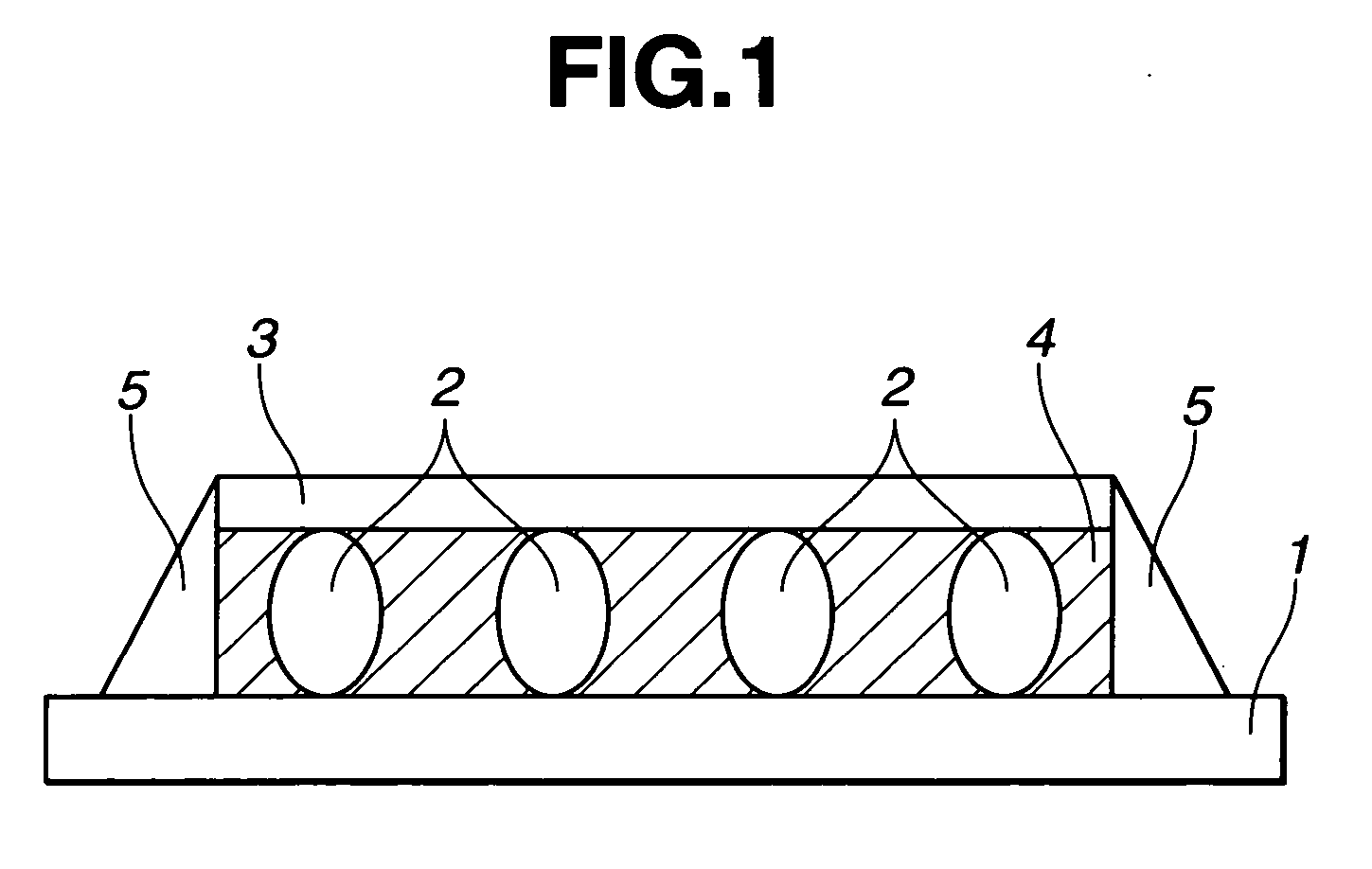Liquid epoxy resin composition and semiconductor device
- Summary
- Abstract
- Description
- Claims
- Application Information
AI Technical Summary
Benefits of technology
Problems solved by technology
Method used
Image
Examples
example
[0068] Examples of the invention and Comparative Examples are given below by way of illustration, and are not intended to limit the invention. The acronym Mw is molecular weight and pbw is parts by weight.
examples 1-7
, Comparative Examples 1-5 and Reference Examples 1-2
[0069] The components shown in Tables 1 and 2 were intimately kneaded on a planetary mixer and three-roll mill to give seven resin compositions. These resin compositions were examined by the following tests. The results are shown in Tables 1 and 2.
[0070] The viscosity at 25° C. was measured using a BH-type rotational viscometer at a rotational speed of 4 rpm.
Shelf Stability
[0071] The resin composition was held at 25° C. and 60% RH. Shelf stability is expressed by a time which is one-half the time passed until the viscosity as measured above marked a 20% increase.
[0072] The gel time was determined by dropping 0.5 cc of the resin composition on a hot plate at 150° C., whipping the resin composition with a spatula, and monitoring the time when threading ceased.
Glass Transition Temperature (Tq)
[0073] Using a 5×5×15 mm dimensioned sample of the resin composition which had been cured at 120° C. for 0.5 hour ...
PUM
| Property | Measurement | Unit |
|---|---|---|
| Temperature | aaaaa | aaaaa |
| Percent by mass | aaaaa | aaaaa |
| Percent by mass | aaaaa | aaaaa |
Abstract
Description
Claims
Application Information
 Login to View More
Login to View More - R&D
- Intellectual Property
- Life Sciences
- Materials
- Tech Scout
- Unparalleled Data Quality
- Higher Quality Content
- 60% Fewer Hallucinations
Browse by: Latest US Patents, China's latest patents, Technical Efficacy Thesaurus, Application Domain, Technology Topic, Popular Technical Reports.
© 2025 PatSnap. All rights reserved.Legal|Privacy policy|Modern Slavery Act Transparency Statement|Sitemap|About US| Contact US: help@patsnap.com



